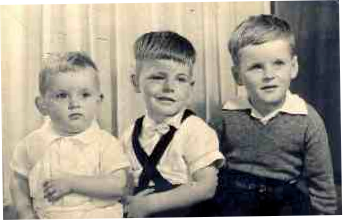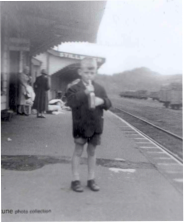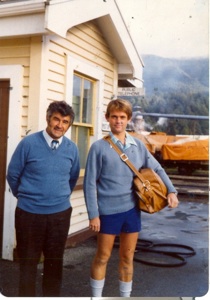







Tony Michael Tommy

He’s as much a part of the town as coal mining and the Inangahua River—Tony Fortune is world famous in Reefton.
Born and bred in Reefton, Tony attended the local primary school and high school. The 53-year old kept himself busy from a young age, with part-time jobs and sporting activities and has also been an active figure in the community for a long time.
Tony’s list of other community activities and achievements is impressive—he was a Youth for Hunger campaigner from 1965-69, a CCD (Christian doctrine) teacher, a member of the Sacred Heart Catholic parish council from 1975—secretary from 1978-79 and president from 1981 on, and attended the national band competition with the Greymouth Municipal Band in 1978, 1980 and 1981.
Tony’s achievements don’t end there either—he has been a member of the PPTA from 1978, a Justice of the Peace since 1992, involved with the table tennis club from 1963-80, the athletics club from 1962-80, and the harriers club captain from 1969-92. He was also the Reefton Hearing Association secretary from 1976-80, and took the Weight Watching Club from 1976--78.
“In those days people asked me to do things and I just said yes for everything. I had to learn to say no.”
Weekday radio reports have made Tony known to the entire region. His reports on Reefton, started in 1998 and include weather, history, local birthdays and up-coming events.
“I really enjoy the stuff on the radio. I get a lot of feedback, people ringing up that don’t even know me saying they enjoy it—young and old.”
More than 1600 days of tramping is recorded in his logbook, including climbs to Everest Base Camp in 2004 and Mt Kilimanjaro (the highest free-standing mountain in the world) last year. Plus, he has clocked more than 200,000kms of running and 100,000km cycling.
He has toured the South and North Islands several times each, toured Tasmania and Savaii, Samoa’s largest island, and tramped up Uluru (Ayers Rock) and mountains in Germany and Switzerland.
In the middle of all the community and sporting activities has been his main job as a teacher.
He shifted to Inangahua College in 1976 and has been there ever since, but his role within the school has been as varied as the mountains he has climbed.
Physical education, outdoor education, junior science, sports co-ordinator, art, music, drama and dance are all subjects that have been under Tony’s guidance at some stage.
One of the best things he has done is the outdoor education camps up to Waitahu (near Reefton), a camp he took for 28 years before it was moved to Waiuta.
“I would have taken over 1000 kids over the years.”
Tony also took the annual Form 2 trip to Wellington for 25 years and organised it for 14 years.
“I know more about Government House than some of the guides do.”
When Inangahua College merged with Reefton Primary to become Reefton Area School in 2003 he returned to his favourite subject—physical education.
“I’ve never been bored with teaching here.”
Eventually Tony would like to publish a book on stories from Reefton.
More tramping and cycling is also planned with a climb up Mt Fujiama in Japan planned for September, and in time a cycling tour around Iceland.
“I want to keep running and biking and tramping as long as I can, until the body give out I suppose.”
And, just to keep him really busy, Tony is godfather to seven current or former Reeftonites.
“It’s good to see Reefton perking up with a little more prosperity which we well deserve after years of being in the doldrums.”
The man described as “chipped from the granite from the hills around this town” intends to “stay up until I drop.”
Tony was born in Reefton hospital in 1952 and delivered by Doctor Wicken.
Brothers Tommy and Michael
Parents Olive born Salford Ireland and Tom born Gorey county Wexford England

Tony winning The Great Westland Marathon 1980

